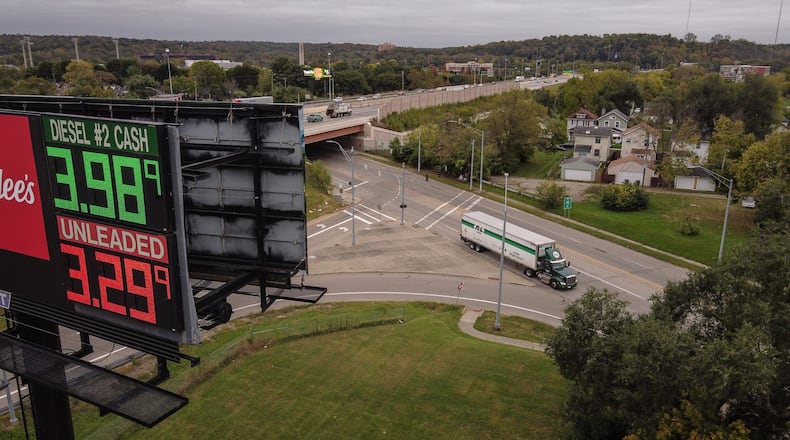The increase is because of an energy crunch that has developed overseas, according to Patrick De Haan, head of petroleum analysis for Gas Buddy.
“It’s kind of a two-fold issue,” he said. “First of all, China is running perilously low on coal to fire up its power plants and, as a result, they’re buying as much coal and natural gas and oil as they can.”
In addition, a natural gas shortage in Europe is having a similar effect, De Haan said. As a result, natural gas-fired power plants in the U.S. are, in some capacities, changing over to using oil for electric generation, he said.
“Of course we have, then, higher demand from that as some of those natural gas plants switch over to processed oil,” De Haan said. “As a result, we’ve seen a bigger increase in demand.”
OPEC, about two weeks ago, disappointed the market by suggesting that it will not further raise output to match the increased demand. With that, the price of oil leapt to its highest level in seven years.
“Unfortunately, that’s why gas prices in the last couple of weeks have taken a big jump up,” De Haan said.
Gas prices in the region are below the national average. Ohio prices reached $3.25 on Oct. 16, its highest recorded average, according to Gas Buddy. The average price for unleaded gas in Ohio on Friday was $3.21, according to AAA. That’s a 16.5-cent increase from a month ago and $1.12 more than a year ago.
The lowest reported price of unleaded gas at fueling stations in Dayton, Springfield, Middletown and Hamilton as of 3:30 p.m. Friday was $3.07, $3.09 and $3.02 and $3.08, respectively, according to GasBuddy, and nearly a dollar more than a year ago at this time. The highest price at stations in the first three of those cities was $3.29, while the most expensive price in Hamilton was $3.31.
Fuel prices are expected to continue to rise for at least through the winter, potentially, he said.
“If we get a cold winter, it could be even worse,” he said. “I don’t know that we’ll see much increase in oil production. OPEC’s increasing production every month by about 400,000 barrels but that’s a slow and steady increase that may just not be enough.”
The national average price of gas price, if it does increase, likely won’t rise to more than $3.50 a gallon, De Haan said, but there’s not much risk of getting anywhere near $4 a gallon.
Typically, gas prices start to decrease each fall was refineries switch over to their winter blends, which are less expensive to create than their summer blends, according to Kara Hitchens, a spokeswoman for AAA Club Alliance.
What could hamper that from occurring are supply chain issues that continue to make the process of getting gasoline to the pump a challenge, Hitchens said.
AAA suggests motorists keep their vehicle maintenance up to date, Hitchens said.
“Any car that’s running at its best will help with fuel efficiency,” she said. “You want to make sure that your tires are properly inflated and that they have good tread depth. That helps your car run well.”
Tips to conserve gasoline also include avoiding speeding and jack-rabbit starts, taking advantage of loyalty programs at various grocers, gas stations and warehouse clubs and working errands that might end up spread out throughout the day into one outing instead, Hitchens said.
Motorists also can use a credit card with a rebate attached to it, De Haan said.
About the Author

